9 Top-Rated Tourist Attractions in Jericho
Jericho may not look like much at first but this is one of the oldest continuously inhabited towns in the world. Although you'd need to have more than a passing interest in archaeology to figure out the complicated layers on the tell (settlement mound), just standing on the top trying to get your head around the mammoth history is an awe-inspiring highlight for most tourists. The road between Jerusalem and Jericho has been a major highway through the centuries, and the area here is scattered with interesting attractions from the Jewish, Byzantine, and Muslim eras. No history lover should miss a trip here.
1 Jericho Tell
Just 2.5 kilometers northwest of Jericho's central square, opposite Elisha's Spring (also known as the Sultan's Spring) is the ancient 21-meter-high tell(settlement mound) of Jericho - also known as Tell al-Sultan. Archaeological investigation on this site began in 1860, but nothing of true importance was uncovered until the British excavations of 1930-31. The real breakthrough came with Kathleen Kenyon's investigations in the 1950s. She identified 23 occupation levels with the oldest traces of human settlement dating from around 8,000 BC. To the ordinary visitor, the remains of this early period in human history may not seem particularly sensational. The most noticeable feature is the broad trench, which archaeologists cut through the hill in order to investigate the various levels down to undisturbed soil. But the importance of this site in our understanding of human civilisation cannot be over-estimated. Jericho lays claim to the title of the world's oldest continuously inhabited town. In thetrench, you can see remains of the Neolithic town dating to approximately 7,000 BC, consisting of a section of the town wall and the 9-meter-high round tower built against it. On the east side, you see the entrance leading to 22 steps of a spiral staircase (the world's oldest staircase) and an opening higher up. To the north of this is a shrine made by Mesolithic nomads, dating from 8000 BC.
2 Hisham's Palace
This 8th-century palace was built by the 10th Omayyad Caliph Hisham in AD 724, but never completely finished. The earthquake of AD 746 destroyed it completely, and the site remained forgotten until British archaeologists excavated here in 1937. Numerous finds from the site, including the figural representations characteristic of early Islamic art, can be seen in the Rockefeller Museum in Jerusalem. The palace is laid out on a square plan, with four ranges of buildings opening off an inner courtyard and no entrances on the outside. Immediately north is a large bath housewith a bare ceiling, which originally contained alternating male and female figures and had a roof borne on sixteen pillars. In the bath house's northwest corner is a small room with an apse, no doubt a rest room or reception room for the Caliph. It is famed for its completely preservedmosaic, a work of consummate craftsmanship depicting three gazelles under an orange-tree, one of them being attacked by a lion.
Location: 2 km north of Elisha's Spring, Jericho
3 Mount of Temptation
Northwest of Jericho, the hillside of Qarantal plays an important role in Christian tradition. This is the Mount of Temptation where Jesus Christ fasted after being baptized in the Jordan River by John the Baptist. In AD 340, St. Chariton built a chapel on the hill summit and another was built by the cave in which Jesus is said to have sheltered. The Greek Orthodox Church acquired the site in 1875 and in 1895 built the Sarandarion Monastery (the name refers to the 40 days of Jesus' fast) halfway up the hill. From the monastery, a steep path runs up to the summit on which you can visit the remains of St. Chariton's original chapel. The views from the top across the arid hills are fantastic. For those that don't fancy the hike, there's a cable car to the summit from Jericho.
4 Wadi Qelt
This lush valley is a tranquil slash of green amid the barren hills. It's a beautiful spot with gushing fresh water springs and palm trees, and the restful atmosphere has attracted ascetics for centuries. A number of monastery communities have set up camp here through the years, and Herod the Great built an aqueduct, which was repaired during the British Mandate. The Romans also built a road along this ancient route between Jerusalem and Jericho. In early Christian times, hermits lived in caves in this wild mountain country, which led to the foundation of St. George's Monastery here. It's a great place for a day hike or to just pack a picnic.
5 St. George's Monastery
The Greek Orthodox Monastery of St. George clings precariously to the sheer north face of Wadi Qilt gorge. The monastery, originally dedicated to the Virgin Mary, was founded in AD 480. It was home to a flourishing monk population until it was destroyed by the Persians in AD 614 and afterwards, abandoned. The present buildings were constructed in the late 19th century and inside there are a number of interesting pieces of religious art. A stony path leads up to the main entrance for the monastery. Inside, the church dedicated to the Virgin Mary holds fine icons and frescoes, while the Church of St. John and St. George preserves a sixth-century mosaic pavement. In a cave nearby, are the remains of the monks who were killed during the Persian advance on Jerusalem.
Location: Jericho Road (20 km from Jerusalem)
6 Qasr el Yahud
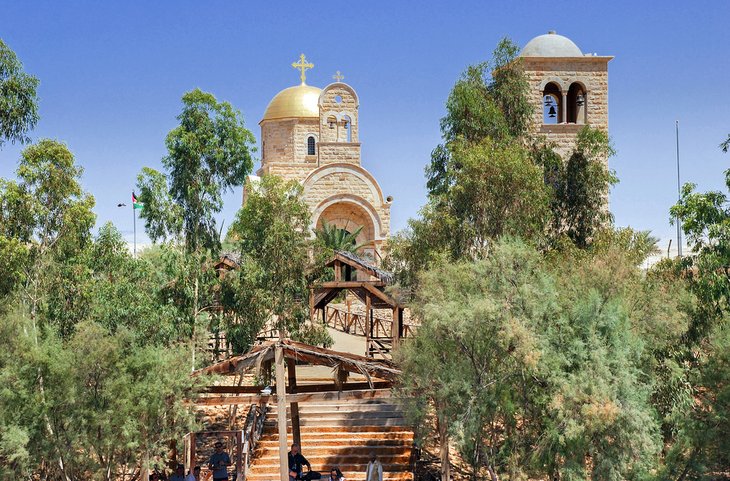
Right beside the Jordan River is Qasr el Yahud; one of the sites vying for the title of Bethany-beyond-the-Jordan where Jesus was baptized by John the Baptist. Across the murky, narrow, and shallow strip of the Jordan River is the other site on Jordanian territory, which has a much more solid case for the title after recent archaeological finds. Nevertheless, if you don't plan on visiting Jordan, this spot does just fine. It's popular with pilgrims immersing themselves in the water. If you do decide to enter the river, please remember you are not allowed to wade the three metres to the other shore. The Israeli and Jordanian armies keep watch on the other side.
7 Nabi Musa
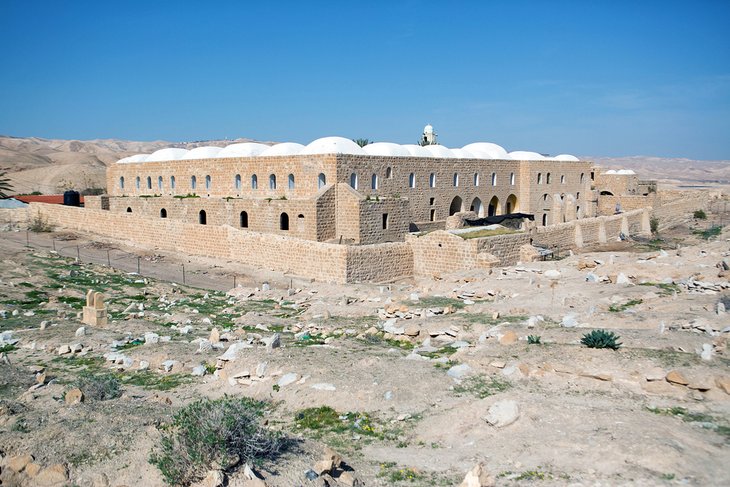
The Islamic shrine of Nabi Musa (Prophet Moses) lies in the desert to the south of Jericho.
Although there is no proof that the Prophet Moses is actually buried here (and Mount Nebo in Jordan also vies for the title of his burial place), an old tradition since the Middle Ages claims this is Moses' resting place. Saladin knew about this place in the 12th century, and the Mameluke Sultan Baibars built a mosque here commemorating Moses. The mosque is commandingly situated on a hill where there is also a large cemetery for Muslims who wish to be near the prophet, even in death.
8 Inn of the Good Samaritan
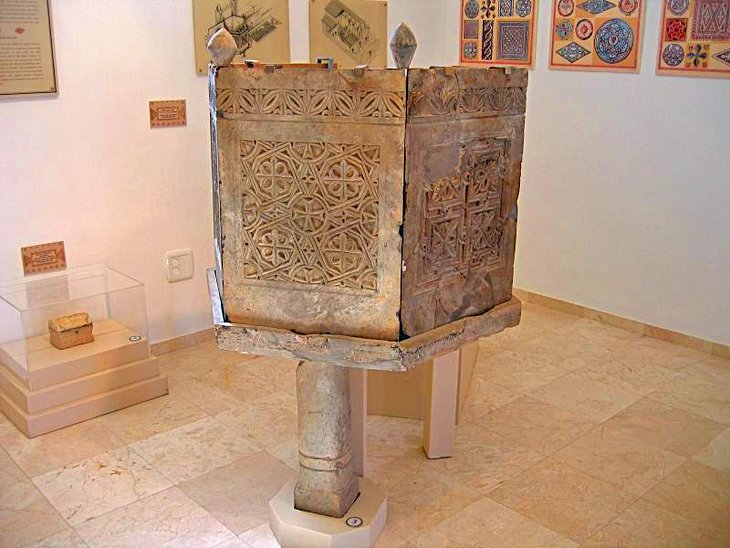
On the road between Jericho and Jerusalem, the Inn of the Good Samaritan commemorates the New Testament story of a robbed traveler taken under the wing of a passing Samaritan who brings him to a roadside inn to care for his wounds. Excavations here have uncovered a Jewish temple and a Byzantine church on this spot, and the museum beside the ruins is full of well-preserved mosaics and other finds from the site.
9 Hasmonean Palace
Excavations here have brought to light a large palace showing clear signs of Hellenistic influence. It is thought to have been built by the Hasmonean king Alexander Jannaeus (103-76 BC) and to have been occupied by the last Hasmonean rulers, and then by Herod, who enlarged and embellished it. While the palace at Masada was intended as a private residence, this palace was designed for official and state occasions. The palace stood in a park laid out with terraces and water channels and was built on a symmetrical plan around a spacious courtyard. Among the structures identified are a large audience chamber, rooms decorated with frescoes, Roman baths, and Jewish ritual baths. The most striking feature, however, is a large swimming pool measuring 32 meters by 18 meters and 4 meters deep, which archaeologists believe was the bath in which Herod had his 18-year-old brother-in-law Aristobulus drowned, only a year after he himself had appointed him high priest.
Location: 2.5 km west of Jericho
History
Descendants of the Mesolithic hunters who had first established a sanctuary by the spring at Jericho made remarkable progress. In the course of a period, which Carbon-14 evidence suggests is about a thousand years, they made the full transition from a wandering to a settled existence in what must have been a community of considerable complexity, for the imposing defences are evidence of an efficient communal organization. The inhabitants of Jericho in this period had a cult of fertility and of the dead. They covered the skulls of their dead with a layer of plaster and set them up in their houses. After the destruction of the town, either by war or in an earthquake, the site was occupied in the 6th millennium BC by men of a different race who had mastered the craft of pottery, but built very simple houses. In the Chalcolithic period (5th millennium BC), the settlement moved west to the mouth of the Wadi Qilt, perhaps because the spring had altered its position, but it soon returned to the original site. Square houses were now built within a strong outer wall.
The period around 2,000 B.C. is represented by pottery vessels in the form of human faces. In the Hyksos period (18th-16th century BC) a new town wall was built of rammed earth, with a pronounced batter. This town was destroyed about 1,400 BC.
The Bible gives a detailed account (Joshua 2-6) of the conquest and destruction of Jericho by the Israelites, coming from east of the Jordan. This event was formerly dated to the 15th century BC, but the 13th century (the time of Pharaoh Ramses II) is now considered a more likely date. In the distribution of territory, after the Israelites occupied the Promised Land, the Jericho area was assigned to the tribe of Benjamin (Joshua 18,21). In the reign of King Ahab of Israel (9th century BC) the destroyed city was rebuilt. During this period, the prophet Elijah and his disciple Elisha came to Jericho (2 Kings 2). Accordingly, the spring is known as Elisha's Spring.
In 586 BC, the Babylonians held the last king of Judah, Zedekiah, who had fled from Jerusalem, as a prisoner in Jericho, blinded him, and carried him off to exile in Babylon (2 Kings 25,7). During the Persian period, the tell of Jericho was once again abandoned as it had been in the 5th millennium. After 332 BC, the Hellenistic city of Jericho was built farther south, at the mouth of the Wadi Qilt. In 30 BC, Octavian (the future Emperor Augustus) gave the oasis to Herod, who made it his winter residence, built the fortress of Cyprus (named after his mother) to defend it, and died here in 4 BC. His body was then conveyed in a splendid cortege to the Herodeion.
The Hellenistic/Herodian city of Jericho was destroyed by the Romans in AD 70. Later, a settlement grew up on the site of the present town, to the southeast of the tell. A number of churches and a synagogue have been identified as dating from the Byzantine period. A new era began in 634 with the Arab conquest. The Omayyad Caliphs, ruling from Damascus, built a fortress and a mosque, and in 724, Caliph Hisham built a palace (Khirbet el-Mafyar). Thereafter, Jericho gradually lost importance, declining into a modest village.
Under the British Mandate, between the two world wars, the old Roman road through the Wadi Qilt was replaced by a modern road from Jerusalem to the Dead Sea and Jericho. In 1940, the town had a population of 4,000, who gained their living from the sale of bananas and citrus fruits grown in the oasis. The population has now risen to 7,000.
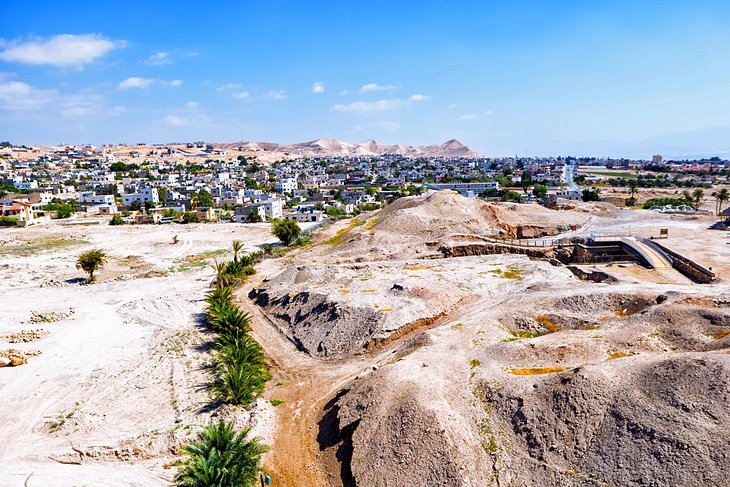
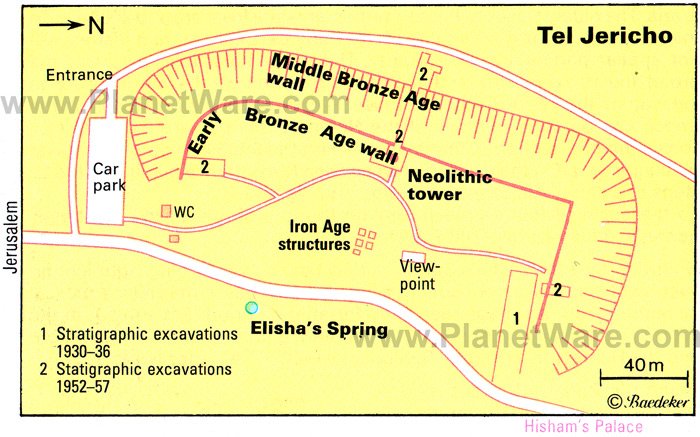
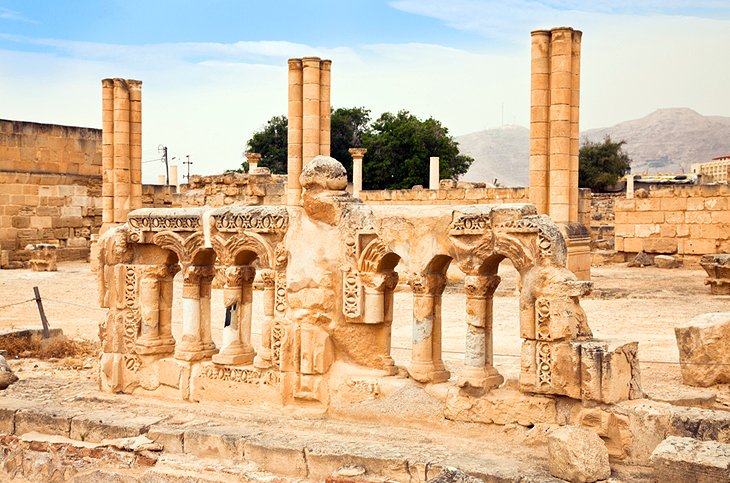
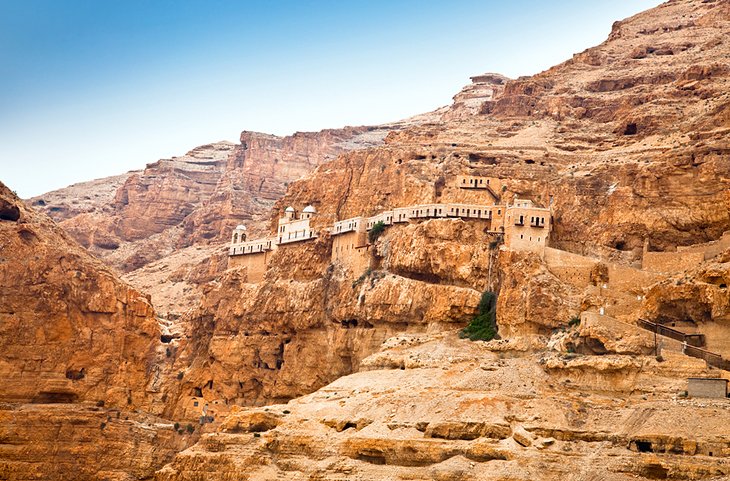
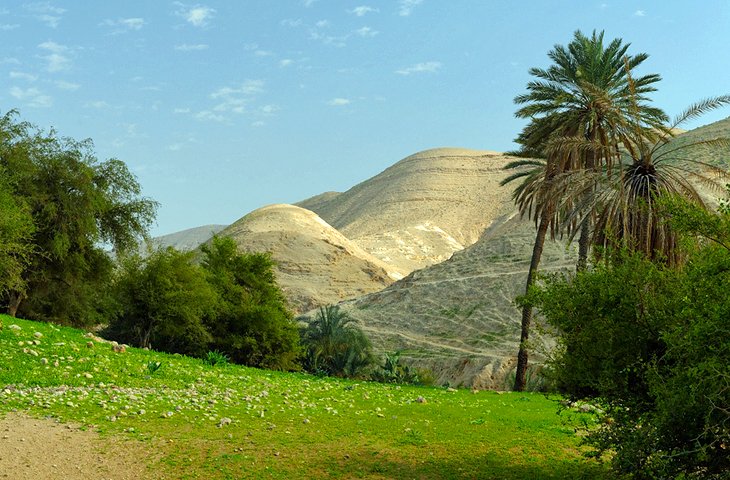
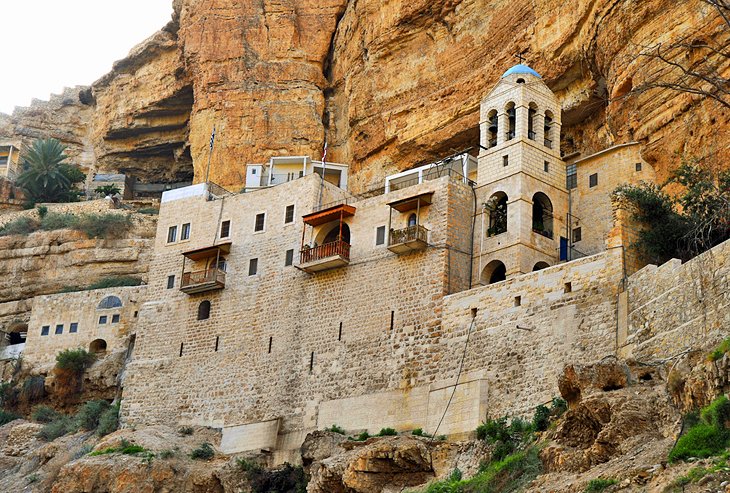
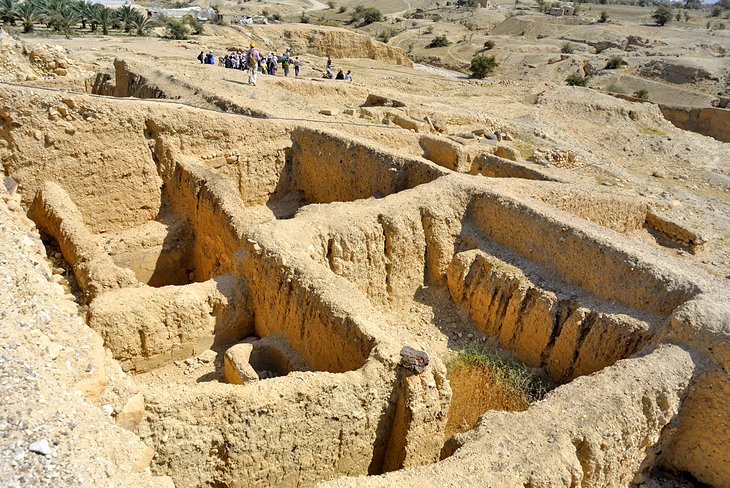
No comments:
Post a Comment